11 Salad-Making Tips for People Who Hate Salad
The problem isn’t you, it’s the salad.
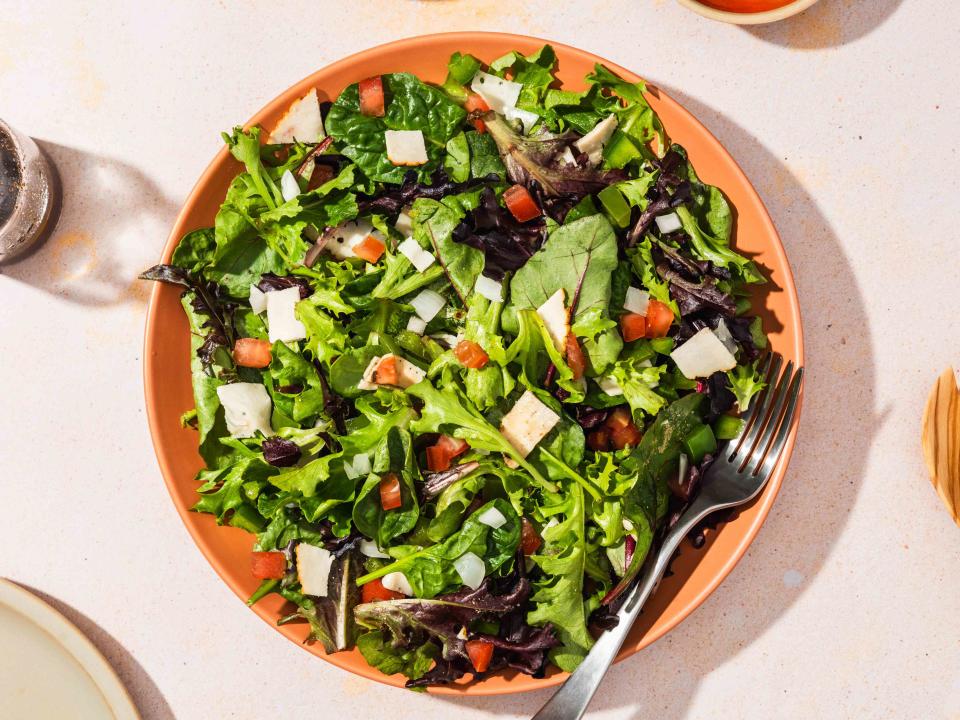
AllRecipes / Ana Cadena
Even as a self-proclaimed salad-lover, I understand and sympathize with those who don’t care for (or even legitimately dislike) salad. I understand completely.
Salad is a controversial topic, and I think it’s largely because, when we talk about “salad,” we’re often talking about entirely different things. There are no bright-line rules governing what constitutes a salad. I mean, if you’re from my proverbial neck of the woods, boiled potatoes coated in mayonnaise equals salad. Folks, you can combine citrus-flavored Jell-O, brown mustard, mayo, cabbage, white vinegar, and ham… and call it salad. No one will stop you, not even us.
Merriam-Webster says that salad is “a usually incongruous mixture,” listing “hodgepodge” as a close synonym. The dictionary can’t even define salad well, how are we supposed to?
In my experience, a lot of people know salad as limp greens (or in some circles, watery iceberg lettuce) bogged down with whatever brand of bottled Italian dressing is on sale that week, with some too-chunky cucumber rounds and whole grape tomatoes thrown in for good measure. At least, that’s what I grew up understanding salad to be. And who could blame someone for being less than thrilled about that? Not me.
The reality is, salad is often an afterthought—a token sidekick to certain entrees or an easy, throw-together way to get a “vegetable” on the table. However, if you can ditch the semi-traumatic image of what you (through no fault of your own) think salad is, and embrace the idea of what salad can be—i.e. An incredibly vibrant, dynamic, crave-worthy side or main dish—I promise, your life will be better for it.
If you’re open to the possibility, here are TK# pointers that will help you along the way.
First, Embrace This One Essential Truth:
No one can tell you what salad is or is not.
And that’s a good thing! As stated above, there are no hard and fast rules to salad, and that can be difficult to accept but you must. Salad can be anything you want it to be. There’s nothing that has to be included or excluded. If you hate the salads you grew up with, abandon them entirely. Reach for ingredients you love, prepared in a way that’s appealing to you; don’t give a second thought to anything else.
Grab Better Greens
There may not be explicit rules defining salad, but there are certain universal principles you can apply to salad—principles such as this: if you want to build something great, build from a solid foundation. For most salads (unless you’re thinking, grain salad), the lettuce/green is arguably the most important element. The greens are what you’ll rely on to carry everything else, so they need to have substance.
Like salad itself, substance might mean different things to different people. I have substantial substance expectations, so I look for substance in terms of texture, flavor, and nutritional value. For this reason, I enjoy tossing together arugula, spinach, and stemmed, shredded kale for a custom salad blend. However, it’s up to you to determine what’s most important to you.
Love crisp texture? Reach for romaine. Enjoy a potent foundational flavor? Try incorporating watercress. If this is an entirely unfamiliar landscape, go to the lettuce section of your favorite grocery store, pick out a few options that seem intriguing, and see what you like.
In all honesty, as long as you avoid spring mix, you’ll probably be just fine.
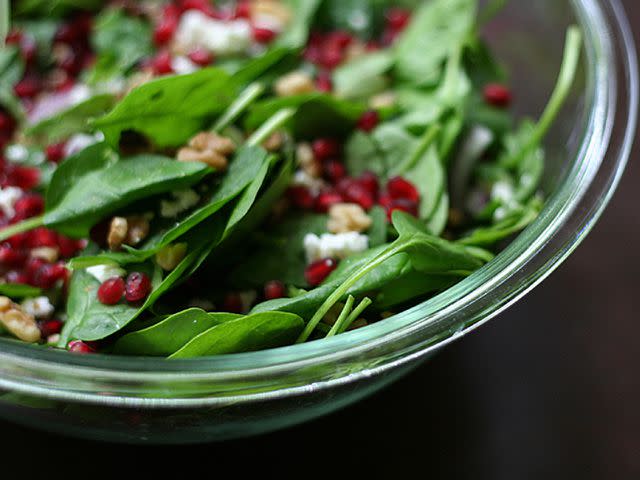
Add Herbs
Before we move on from the foundation, always remember that you can significantly amp up the personality of any salad by bringing in fresh herbs—a lot of them. One of the best ways to do this is to toss whole leaves of soft herbs like basil, mint, parsley, and cilantro in with your salad greens.
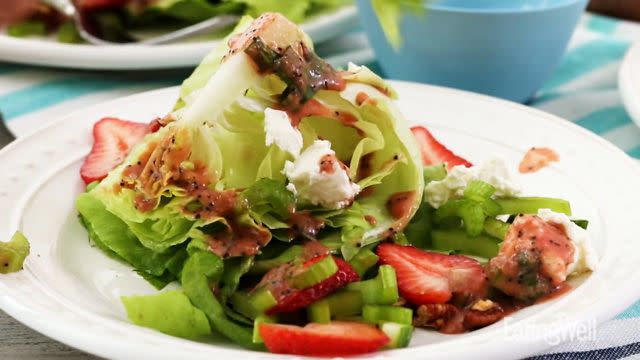
Cut Additional Vegetables Appropriately
Whatever other vegetables you opt to include with your greens—radishes, cucumbers, fennel, carrots, asparagus, etc.—if they require being cut into smaller pieces, be sure you think about the experience of chewing when you’re chopping. Don’t make this a mandatory raw vegetable intake moment, that’s the salad of your past. We’re looking towards the future now.
“Technically bite-sized” shouldn’t be the standard; instead, think about what’s going to be texturally pleasant to eat. I can’t speak for everyone, but for me, English cucumber rounds that are as thick as Reese’s cups are not the move. No wonder they always sink to the bottom of the bowl.
In most of the salads I make, I lean towards slicing the added vegetable components delicately so that the lettuce and greens can carry them with ease. You can certainly accomplish dainty cuts with a sharp knife, but if you’re itching for a reason to break out your mandoline, here you go.
Of course, if you’re going for a chopped-salad vibe or making a heartier salad featuring ingredients like grains or beans, bulkier textures make total sense. Even still, you want to cut ingredients into small enough pieces that they blend together in a way that allows you to get a little bit of a lot of things in each bite. I realize that dwelling on vegetable cuts may sound fussy (pretentious, even), but this is one of those small details that actually makes a major difference.
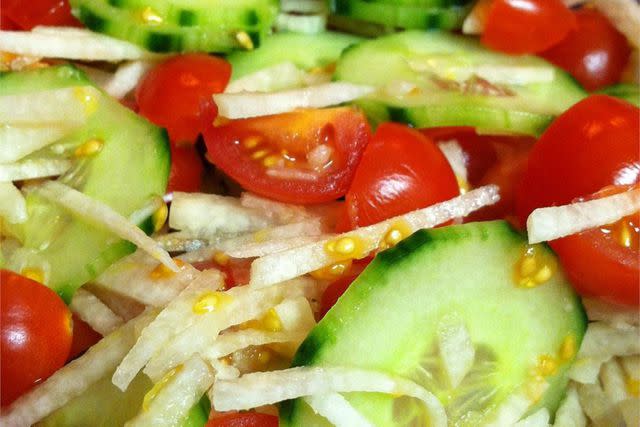
Think Twice About Tomatoes
I am not saying you shouldn’t include tomatoes if you enjoy them; as a tomato enthusiast, I would never. I only bring this up because it seems as though tomatoes are one of those salad ingredients that a lot of people feel obligated to include no matter what.
This should go without saying but…if you don’t actually like tomatoes, don’t use them. And if you do like them, be thoughtful about incorporating them.
Referencing back to the pointer above, consider if you’ve ever found whole grape tomatoes dropped on top of a bowl of greens to make for a pleasant eating experience. Personally, the only circumstances I can imagine enjoying that scenario is if the tomatoes were roasted or blistered. Raw and whole, they’re too hard and don’t amalgamate with other ingredients well. So, as a general rule of thumb for grape or cherry tomatoes, pick one or the other: raw or whole. If you’re going raw, at least halve the little guys.
For other tomato varieties that require you to chop before incorporating, take a few extra seconds to seed your tomatoes so that you’re only adding the flesh of the fruit to your salad. Otherwise, the viscous, seedy interior of tomatoes will weigh the dish down with unnecessary moisture. This goes for salads where tomatoes are playing a supporting role, as well as for recipes where they’re the star of the show.
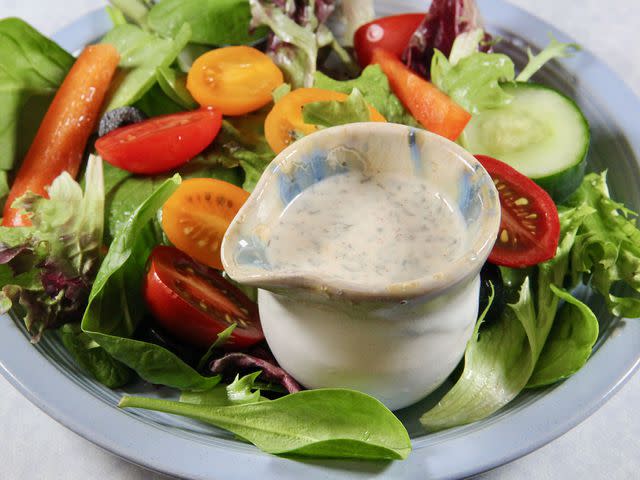
Know That Not Everything Has to Be Raw
There’s certainly nothing wrong with a salad consisting of exclusively fresh and raw produce, but especially for those who haven’t had the best relationships with salad, adding in some cooked elements is a good way to start redefining salad’s potential.
Here’s a simple place to start: When you have leftover roasted vegetables, try working those into a salad the next day. Or hey, oven-roasted chickpeas are always a great salad addition. At the very least, toast any nuts you want to include.
Now, on the flip side of this tip, it’s also fun to take ingredients that you usually cook, and experiment trying them raw in a salad. For example, use a vegetable peeler to shave thin ribbons of asparagus or summer squash for different sources of vibrancy and crunch.
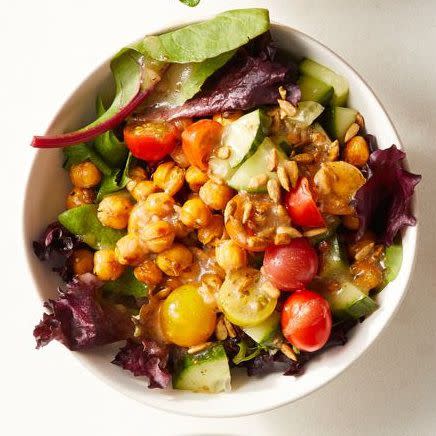
Go DIY on the Dressing
I’m sorry, I know nobody wants to hear this. But the truth is undeniable; turning your back on the bottle to make your own salad dressing raises the overall quality of a salad so substantially that the added effort is generally justified. However, it’s worth remembering that whether you’re going for a rich and creamy dressing (ranch, blue cheese, green goddess) or a light vinaigrette, making your own is really just a matter of whisking a few things together. Plus, you can make a sizeable batch at once, store it in the fridge, and have salad dressing at the ready for a whole week.

Dotdash Meredith Food Studios
Include Elements You Legitimately Want to Eat
Remember: Salad can be whatever you want it to be. So think about your favorite foods/flavors from non-salad contexts. Consider the cheeses you love—and proteins, fruits, flavor profiles, snacks, and seasonings. Work them into the bowl! Give yourself reasons to actually be excited about what you’re eating; if that looks like crumbling a handful of kettle chips over top of a salad, so be it.
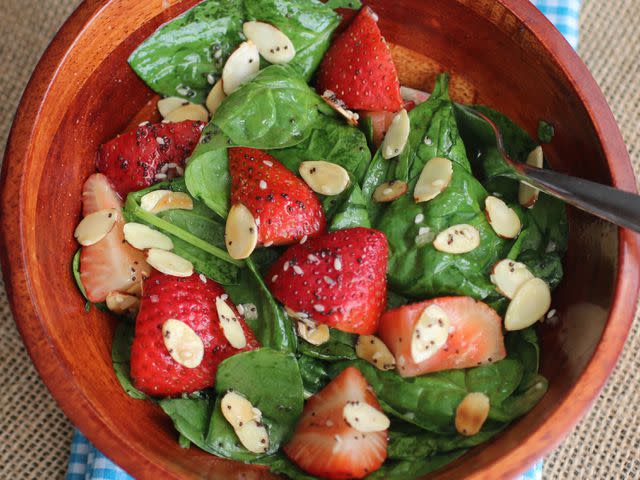
Embrace a Theme
Redfining salad and opening yourself to giving it another chance after a lifetime of hating it can be overwhelming. If you don’t know where to start, look to the genius behind bagged salad kits and build off of a theme.
For example, a Southwest salad is a common crowd favorite (think corn, black beans, avocado, queso fresco, crispy tortilla chips, and peppers). Truthfully, you can take your leftovers from a taco night, whip up a cilantro-lime dressing (a vinaigrette or something creamy), and go to town.
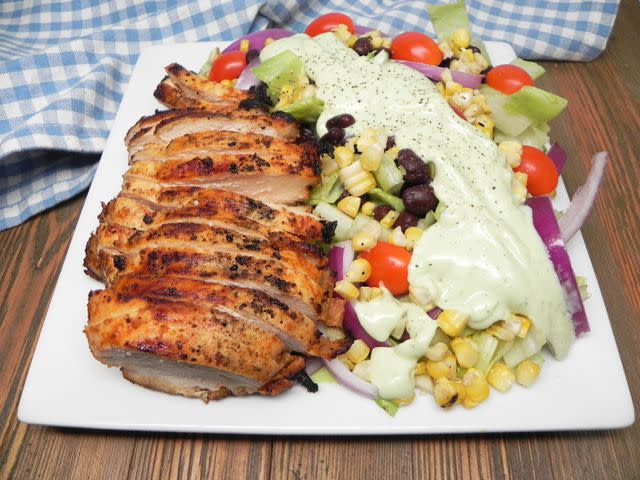
Remember That Balance Is Everything
Balance is what’s missing from all too many sad salads. That said, there’s no need to overthink it. Balance looks like pairing fresh/raw/vegetal ingredients with unctuous ones, like legumes, avocado, or cheese. Or matching earthy flavors with bright ones. If you’re using a creamy dressing, make sure to use hearty greens that can hold up to it. I’ve found, if you think in terms of having a variety of colors, textures, and tastes in the bowl, you’ll inherently pick ingredients that compliment and counterbalance one another.
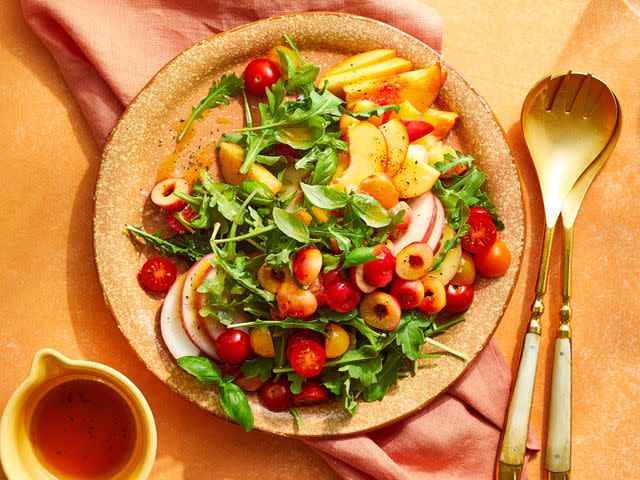
Dotdash Meredith Food Studios
Assemble and Serve Thoughtfully
Sometimes, tossing everything together in a large salad bowl works just fine. However, depending on what all is in your salad, this might also lead you to having to dig for all of the non-lettuce “goodies” at the bottom of the bowl.
To avoid this, oftentimes, I only combine my foundation ingredients (lettuce, greens, herbs) in a mixing bowl and toss with a bit of dressing to lightly coat. Then, I’ll lay the lightly dressed greens out on a large serving platter, arrange the remaining ingredients in layers on top, and drizzle with more dressing. Not only does this approach make it easier for people to grab an even mix of everything with tongs, but it creates a beautiful serving display. I even do this when it’s just myself and one or two others, except instead of laying the base greenery on a serving platter, I place it into individual salad bowls and top each evenly with the remaining ingredients.
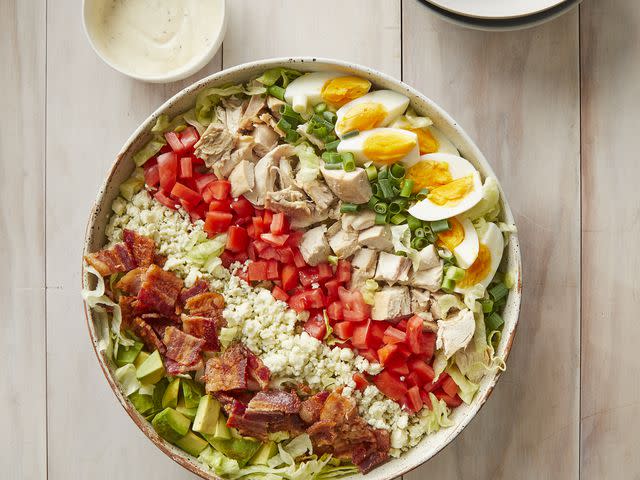
Read the original article on All Recipes.


